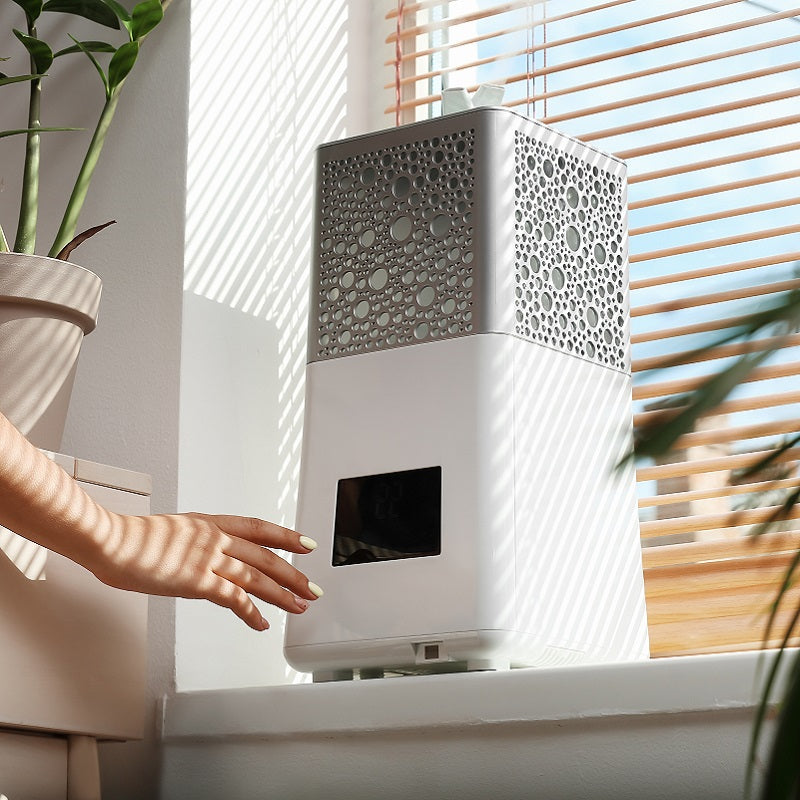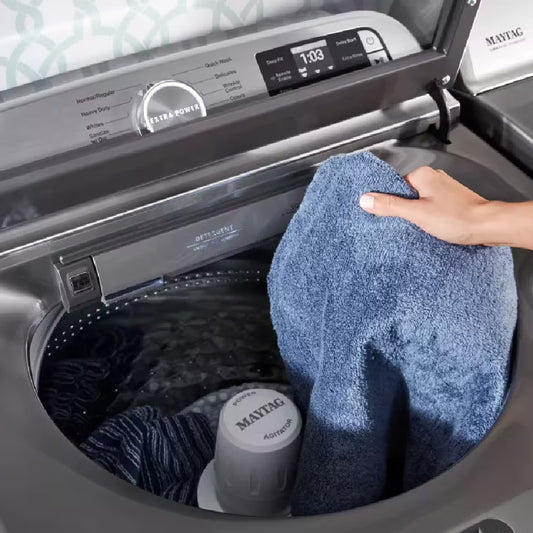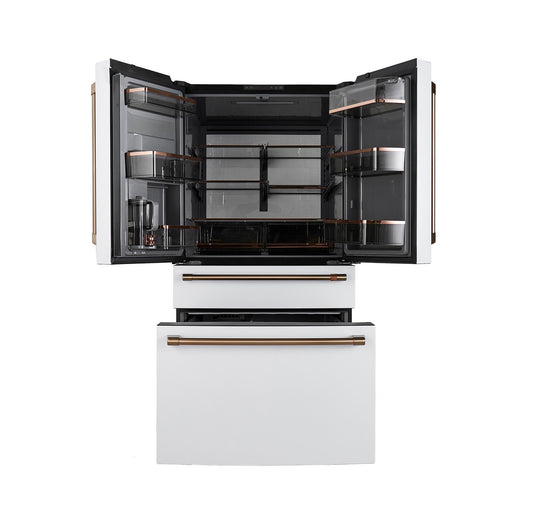In our quest for cleaner living spaces, air purifiers have emerged as silent guardians, tirelessly working to cleanse the air that surrounds us. But how do these handy devices work, and what magic do they perform to transform polluted air into a breath of fresh air? It's not sorcery; it's science. This deep dive into air purifiers will peel back the layers of this invisible shield, ensuring you're well-informed about the ally you have in fighting indoor air pollution.
Demystifying Air Purification Technology
At its core, air purification technology is all about moving air through filters to trap pollutants, particles, and contaminants, leaving nothing but clean air in its wake. But it's not just about pulling air in and pushing it out; it's a careful orchestration of air flow dynamics, filtration media, and sometimes, a little extra help from advanced technologies like UV light or ionization. For optimal performance, knowing where to place air purifier units in your home can significantly influence their effectiveness.
Key Components of an Air Purifier
- The Fan: The unsung hero of an air purifier, the fan initiates the process, drawing in room air and propelling the purified air back out. Its efficiency determines how effectively the air circulates through the system, impacting the overall purification speed and capacity.
- Filters: Here lies the heart of the purification process. Different filters target different pollutants, from dust and pollen to smoke and chemical vapors. The quality and type of filters used play a crucial role in the air purifier's ability to remove various contaminants, making regular maintenance and knowing how to clean an air purifier filter essential for optimal performance.
- Control Panel: Whether it's a simple dial or a touch-sensitive screen, this component lets you command the purifier's speed, mode, and more, tailoring the purification to your needs. Advanced models may include smart features, allowing for remote control via apps or integration with home automation systems, enhancing user convenience and efficiency.

The Heart of the Purifier: Filter Technologies Explained
HEPA (High Efficiency Particulate Air) filters are the heavy lifters in the world of air purifiers. These filters are marvels at capturing 99.97% of particles as small as 0.3 microns. Here's what they catch:
- Pollen: These tiny, fine particles are notorious for triggering allergies and asthma. By capturing pollen, HEPA filters can significantly reduce the presence of allergens in the indoor air, making it a safer haven for allergy sufferers during high pollen seasons.
- Dust and Mold Spores: Dust accumulates from various sources and can carry harmful mites and bacteria, while mold spores can lead to mold growth in damp areas of your home. So you may be wondering, do air purifiers help with dust? In short, yes! HEPA filters effectively remove these particles from the air, helping to maintain a cleaner and healthier living environment, free from potential respiratory irritants.
- Pet Dander and Dust Mite Debris: Pet dander consists of tiny, even microscopic, flecks of skin shed by cats, dogs, rodents, birds, and other animals with fur or feathers. These particles can trigger allergies and asthma. Dust mites, tiny creatures that thrive in warm environments, feed on dust and produce waste that is a common allergen. HEPA filters excel at trapping these allergens, reducing the symptoms of pet and dust mite allergies for occupants.
- Most Smoke Particles: Smoke from cigarettes, cooking, and fires contains a complex mixture of gasses and fine particles that can harm your health. HEPA filters are effective at capturing most of these smoke particles, thereby improving the air quality and reducing the risks associated with smoke inhalation, including respiratory issues and unpleasant odors.
Activated Carbon, UV Light, and Ionizers: Complementary Technologies
While HEPA filters excel at snagging particles, there's more to clean air than just particle count.
- Activated Carbon Filters: These are the odor warriors, absorbing gasses and odors like a sponge. They tackle cooking smells, pet odors, and smoke with ease.
- UV Light: This technology adds a layer of protection by using ultraviolet light to kill bacteria, viruses, and mold spores.
- Ionizers: Emitting charged particles into the air, ionizers help clump smaller pollutants together, making them easier for filters to catch or heavy enough to fall from the air.
The Process: From Polluted to Purified Air
Let's embark on the journey of an air molecule as it travels through the stages of purification, transitioning from contaminated to impeccably clean.
- Pre-filters: Imagine an air molecule, laden with dust, entering the purifier. First, it's whisked away by the fan, drawing it into the heart of the machine where its journey to purification begins. As it moves forward, it encounters the pre-filter, a robust barrier where larger particles such as pet hair, dust bunnies, and the likes are trapped and held captive. This early capture not only prevents these larger particles from clogging the inner workings but also sets the stage for finer filtration.
- HEPA Filters: Next, it navigates through the HEPA filter, a dense maze designed to trap smaller particles. Here, even the most elusive of contaminants, including pollen, mold spores, and fine dust, are caught in the intricate mesh of fibers, leaving them unable to proceed further. This stage dramatically reduces the particle count, ensuring that the air quality is significantly improved.
- Activated Carbon: If the purifier is equipped with an activated carbon filter, our molecule's journey takes a detour through layers of activated carbon. This is where odors, volatile organic compounds (VOCs), and gasses meet their match. The carbon acts like a magnet, attracting and holding these impurities tightly within its pores. This process not only purifies the air but also neutralizes any unpleasant smells, contributing to a fresher, more pleasant indoor environment.
Each component plays a pivotal role, ensuring that the air that cycles back into your room is not just recycled, but truly purified. Through this meticulous process, air purifiers provide a safer, cleaner breathing environment. If you’re still curious on if air purifiers are safe, make sure to read check out our blog for peace of mind.
Beyond Particles: Addressing Gasses and Odors
Not all villains in the air come in the form of particles. Gasses and odors, invisible and often insidious, present a different challenge for air purifiers.
Volatile Organic Compounds (VOCs) are a group of chemicals found in many everyday products, from paints and cleaning supplies to air fresheners. They can evaporate into the air at room temperature, polluting your indoor environment. Traditional filters like HEPA cannot capture these gaseous molecules, which is where activated carbon filters come into play.
Solutions for Smoke, Odors, and Chemicals
- Activated Carbon Filters: These filters excel at adsorbing gasses and odors, trapping them in the pores of the activated carbon. This is crucial for homes with smokers, pets, or those located in areas with high outdoor pollution.
- Advanced Technologies: Some air purifiers also employ UV light and ionizers to tackle bacteria, viruses, and mold spores, offering an extra layer of air sanitation.

Choosing the Right Air Purifier for Your Needs
With a myriad of options available, selecting the right air purifier can seem daunting. However, understanding your specific indoor air quality challenges can guide you to the perfect choice.
Start by identifying the primary sources of indoor air pollution in your home. Is it pet dander, pollen, dust, or VOCs? Maybe it's a combination of several factors. Recognizing these will help you find an air purifier with the right mix of technologies to address your specific concerns.
Features to Look For
When shopping for an air purifier, keep an eye out for:
- HEPA Filters: Essential for capturing a wide range of airborne particles.
- Activated Carbon Filters: A must-have for homes needing to manage odors, gasses, and VOCs.
- UV Light and Ionizers: Consider these if you're concerned about microorganisms in your indoor air, but ensure they are designed to minimize ozone production.
- Airflow and Coverage Area: Make sure the purifier can handle the size of the room where you'll be using it.
- Noise Levels: Since you might be running your air purifier for extended periods, look for a unit that won't disrupt your daily life with excessive noise.
- Energy Efficiency: Opt for a purifier that won't significantly increase your electricity bill.
Your Haven for Fresh Air
Air purifiers serve as an invisible shield, tirelessly working to cleanse the air of pollutants, allergens, and toxins. By employing a combination of filtration technologies, they ensure that the air we breathe indoors is as clean and healthful as possible.
Understanding how air purifiers work demystifies their operation and underscores their value in maintaining indoor air quality. With the right air purifier tailored to your specific needs, you can create a safer, healthier indoor environment. Whether it's dust, pollen, smoke, or VOCs plaguing your air, a well-chosen air purifier can significantly reduce these contaminants, allowing you and your loved ones to breathe easier and live better.







